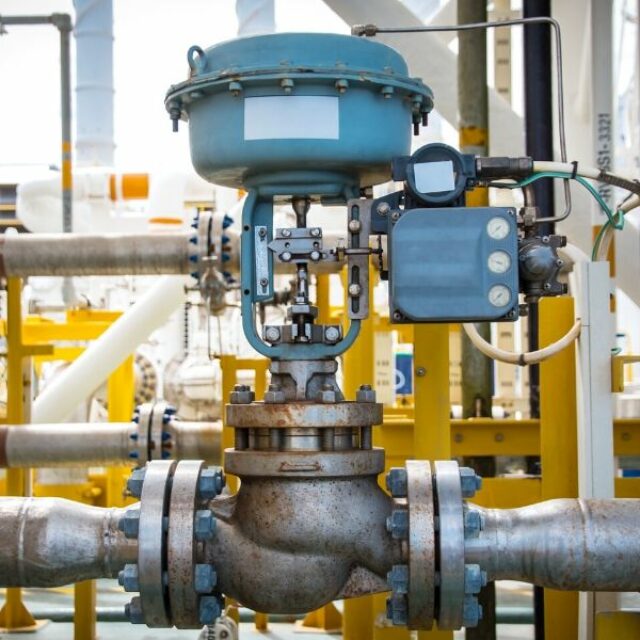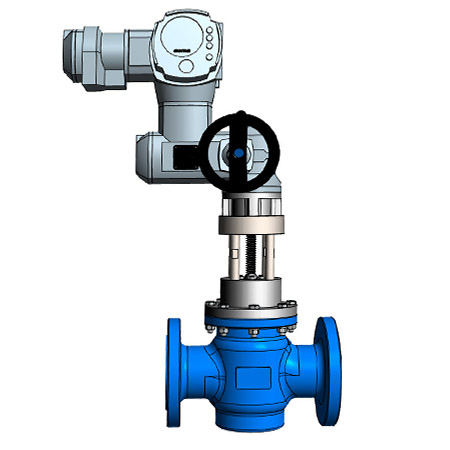Maximizing System Control with High-Performance Control Valves
Maximizing System Control with High-Performance Control Valves
Blog Article

Maximize Energy Savings and Convenience With Advanced Building Automation Controls
In the realm of contemporary style and facility management, the assimilation of sophisticated building automation manages stands as a crucial improvement. The merging of innovation and sustainability has actually birthed a new age where power efficiency, convenience optimization, and functional streamlining are no more possible truths however remote ambitions. By harnessing the power of automation, buildings can adapt, respond, and evolve in manner ins which were when unbelievable. The capacity for substantial energy cost savings and improved comfort is not just a guarantee yet an opportunity waiting to be met. This standard shift in structure monitoring holds the crucial to unlocking a world where environmental conscientiousness and passenger health harmoniously exist together within the walls of our structures.
Energy Efficiency Benefits
Power performance benefits can dramatically minimize power consumption and operational costs in structures. Energy-efficient systems, such as sophisticated building automation controls, can enhance the use of sources like heating, air conditioning, and lights, leading to lower energy costs over time.
Additionally, enhanced energy efficiency can lengthen the life expectancy of building tools and systems. By running extra successfully, heating and cooling systems, light, and other structure elements experience less damage, causing decreased upkeep and substitute expenses. Furthermore, energy-efficient structures typically regulate higher building values and rental rates, giving lasting economic benefits to owners.
In addition, power performance can boost resident comfort and performance. Effectively managed indoor settings with optimal lights and thermal problems create an even more enjoyable and helpful work area, bring about improved worker complete satisfaction and efficiency. On the whole, the power performance benefits connected with innovative building automation controls are multifaceted, including price financial savings, ecological stewardship, and resident well-being.
Boosted Comfort Control
Enhancing convenience control in structure environments needs an advanced integration of sophisticated automation systems for optimum resident wellness. By using sophisticated building automation controls, facilities can customize the interior setting to meet the particular needs and choices of owners. control valves.
By integrating these advanced controls, buildings can not just boost comfort however additionally boost energy performance by optimizing system procedures based on real occupancy and usage patterns. Eventually, focusing on owner comfort with advanced automation systems leads to a more delightful and much healthier interior environment.
Operational Efficiency Improvements

Furthermore, the implementation of real-time surveillance and analytics tools makes it possible for building drivers to identify power ineffectiveness and functional abnormalities immediately. By continuously find out here keeping track of power use patterns and system performance metrics, modifications can be made in real-time to maximize power consumption and make sure peak operational effectiveness. control valves. Additionally, including demand reaction approaches into building automation controls can further boost operational efficiency by dynamically readjusting power use based on grid conditions and pricing signals
Indoor Climate Optimization
Effective indoor environment optimization is an essential element of building automation controls, making certain passengers' convenience and health while making best use of power financial savings. By making use of sophisticated sensing units and controls, building automation systems can continuously adjust and keep track of temperature level, moisture levels, air top quality, and air flow to create an optimal interior environment. Preserving constant and comfy problems not just enhances passenger fulfillment however likewise improves efficiency and total well-being.
Interior environment optimization likewise plays an important duty in energy efficiency. By fine-tuning cooling, heating, and ventilation systems based on real-time information and occupancy patterns, constructing automation controls can substantially lower power intake - control valves. As an example, applying methods such as demand-controlled ventilation and thermal zoning can assist minimize energy waste while ensuring that each area of the structure obtains the essential conditioning.

Lasting Atmosphere Production
Building automation controls not just optimize indoor environment problems for power effectiveness and occupant comfort yet additionally lay the foundation for creating a sustainable environment via tactical management of systems and sources. By integrating innovative structure automation modern technologies, such as sensors, actuators, and smart software application, facilities can monitor and change energy use in real-time to minimize waste and decrease their carbon impact. These systems allow anticipating upkeep, determining potential issues prior to they intensify and maximizing equipment performance to boost long life and performance.
Furthermore, sustainable setting development extends past energy administration to incorporate water conservation, waste reduction, and interior air quality enhancement. Structure automation controls can control water use, detect leakages, and make sure correct waste disposal techniques, adding to total sustainability initiatives. In addition, by checking and controlling ventilation and filtering systems, these technologies improve resident health and wellness and productivity while decreasing power usage connected with HVAC procedures.
Verdict
In verdict, progressed building automation regulates offer significant benefits in regards to energy financial savings, convenience a knockout post control, operational performance, interior climate optimization, and creating a lasting atmosphere. By carrying out these controls, structures can achieve ideal efficiency while minimizing energy usage and improving passenger comfort. It appears that making use of advanced automation technology is important in improving structure efficiency and creating a more sustainable future.
Energy effectiveness benefits can considerably lower energy consumption and functional costs in structures. In general, the power efficiency benefits associated with advanced building automation controls are complex, encompassing cost financial savings, ecological stewardship, and owner wellness.
Additionally, integrating need feedback techniques into structure automation controls can even more improve functional performance by dynamically readjusting power use based on grid problems and pricing signals.
Structure automation manages not only enhance interior climate problems for power performance and owner comfort yet additionally lay the structure for from this source creating a lasting environment via critical management of systems and resources.In conclusion, advanced structure automation regulates offer considerable advantages in terms of energy savings, comfort control, functional efficiency, interior environment optimization, and creating a lasting setting.
Report this page